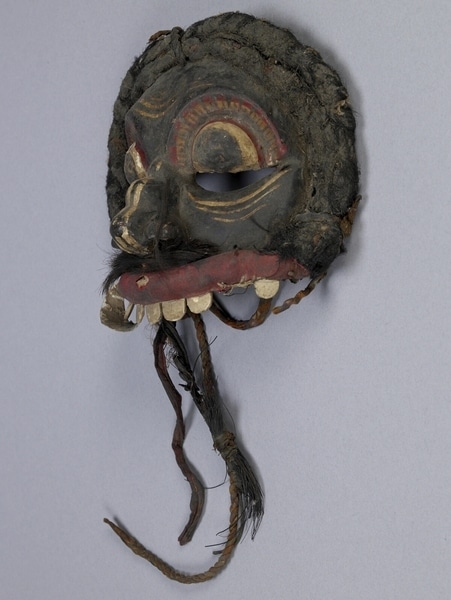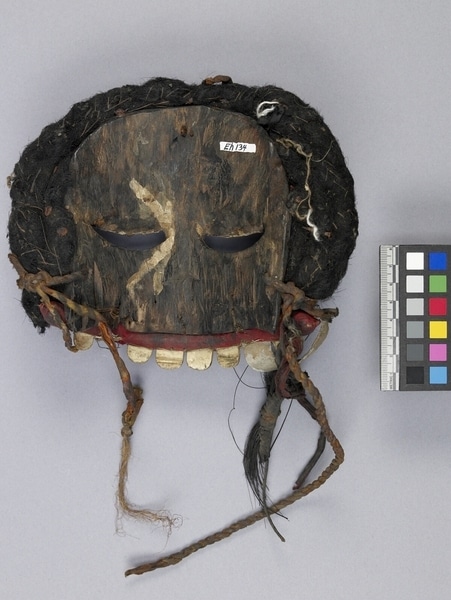Mask Item Number: Eh134 from the MOA: University of British Columbia




Description
Mask with black painted face, a nose with two bumps on the bridge, flaring nostrils, a moustache made of dark brown hair, and bulging eyes, each with a semicircular socket decorated with radiating black lines and yellow and red bands that follow the curve. Painted white vertical lines decorate the nose, and curved white lines indicate wrinkles at the centre of the forehead as well as below each eye. Each eye also has a crescent-shaped hole beneath it. The mouth has a red fabric upper lip only and from which white plastic teeth and curved fangs protrude. A braid made of black woven hair ? is attached around the edge of the mask. Twined fabric ties attached to reverse.
History Of Use
One of the characters used in a ritual exorcism ceremony. Maladies are believed to be caused by specific demons. These demons are portrayed in the 18 characters of the Sanni or demon dancing ceremony. There are several stages to this ritual. In stage two the Sanni demons are invited to the place of ceremony by the Paliya characters of which this is one.
Cultural Context
ritual exorcism
Iconographic Meaning
Eye socket decoration represents stylized lotus petals. Tusks associate mask with demons. The lotus has reference to Buddhism.
Item History
- Made in Sri Lanka before 1983
- Owned by Ari Ebert
- Owned by Jason Schoonover before June 21, 1984
- Received from Museum of Anthropology Shop Volunteers (Funding source) and Jason Schoonover (Seller) on June 21, 1984
What
Who
- Culture
- Sinhalese
- Previous Owner
- Ari Ebert and Jason Schoonover
- Received from
- Museum of Anthropology Shop Volunteers (Funding source) and Jason Schoonover (Seller)
Where
- Holding Institution
- MOA: University of British Columbia
- Made in
- Sri Lanka
When
- Creation Date
- before 1983
- Ownership Date
- before June 21, 1984
- Acquisition Date
- on June 21, 1984
Other
- Condition
- fair
- Current Location
- Case 107
- Accession Number
- 0972/0024